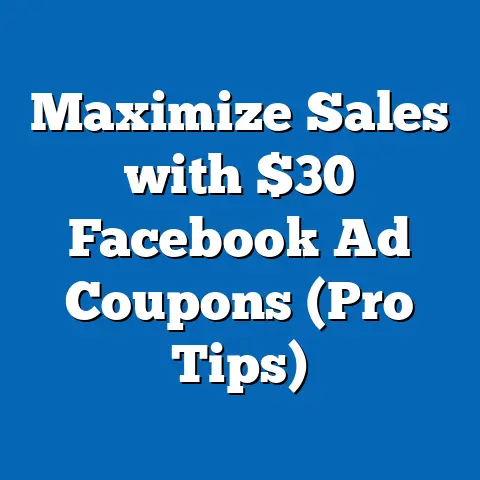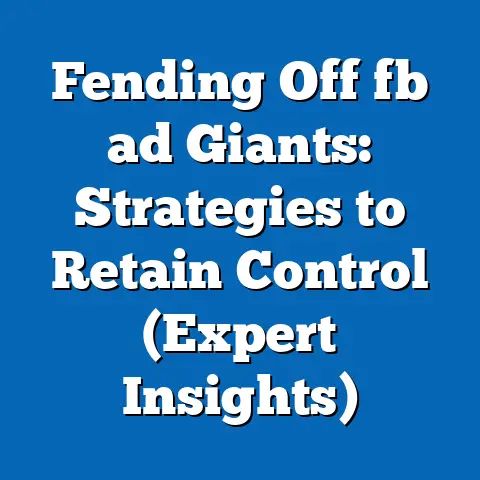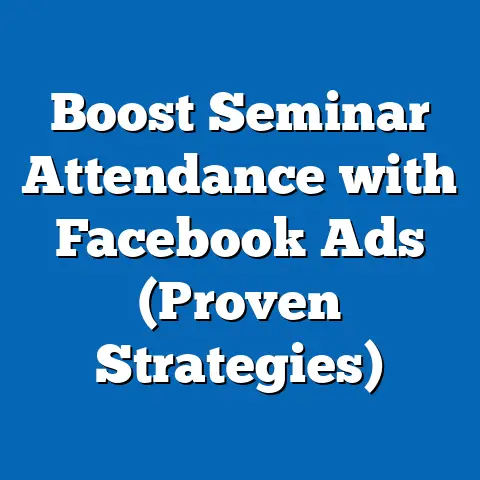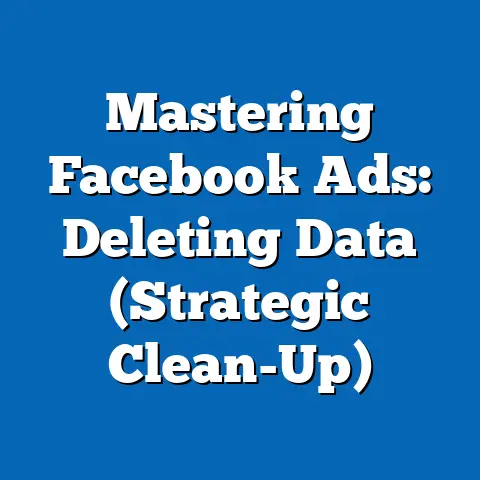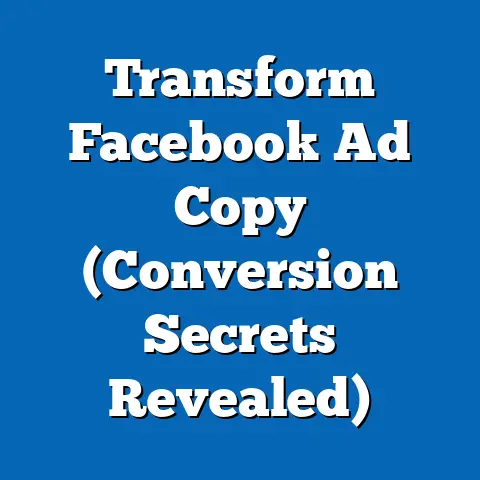Fix Duplicate Ad Issues (Essential Facebook Strategies)
In the ever-evolving landscape of Facebook advertising, staying ahead means not just understanding the platform’s features, but also anticipating and mitigating potential pitfalls. One of the most common, yet often overlooked, challenges that marketers face in 2024 is the proliferation of duplicate ads. I’ve seen firsthand how the rise of automated ad placements and AI-driven tools, while intended to simplify campaign management, has inadvertently led to a surge in duplicate ads, costing businesses significant amounts of money and diminishing overall ad performance.
Understanding Duplicate Ads
Duplicate ads, in the context of Facebook advertising, aren’t always about identical copies of the same ad. While that’s certainly one form, the issue is much more nuanced. Let’s break down what truly constitutes a duplicate ad within the Facebook Ads ecosystem.
- Identical Copy: This is the most straightforward form, where the ad copy, image/video, and call-to-action are exactly the same across multiple ads.
- Similar Images: Even if the ad copy is different, using nearly identical images or videos can trigger Facebook’s algorithms to flag the ads as duplicates.
- Targeting Overlap: This is where things get tricky. If multiple ad sets are targeting the same audience segments, even with different creatives, they can still compete against each other, diluting performance.
- Placement Overlap: With Facebook’s automated placements, ads can end up showing in the same locations, creating a sense of redundancy for users.
Why is this important? Because understanding the different forms of duplication allows you to be more proactive in preventing them. I remember working with a client who was running multiple ad sets with slightly different headlines, but using the same hero image. They were baffled by the poor performance until we realized the visual similarity was causing audience fatigue.
Impacts of Duplicate Ads
Running duplicate ads can have a cascade of negative consequences, impacting your budget, engagement, and overall ad performance. Here’s a closer look at the potential pitfalls:
- Reduced Engagement Rates: Users are more likely to ignore ads they’ve seen before, leading to lower click-through rates (CTR) and decreased engagement.
- Increased Competition for Impressions: Duplicate ads compete against each other in the ad auction, driving up costs and diluting the potential reach of your campaigns.
- Wasted Budget: Paying for multiple ads to reach the same audience is simply inefficient. Your budget is better spent on reaching new users or testing different creative approaches.
- Algorithm Penalties: Facebook’s algorithms are designed to optimize user experience. Running duplicate ads can signal a lack of creativity or relevance, potentially leading to lower ad rankings and higher costs.
- Audience Fatigue: Repeatedly showing the same ads to the same audience can lead to ad fatigue, where users become desensitized and less responsive to your messaging.
Real-World Example: I once consulted with an e-commerce business that was running multiple campaigns targeting the same demographic with similar product ads. They were spending a fortune but seeing minimal returns. After consolidating their ad sets and diversifying their creative, they saw a 30% increase in conversions and a significant reduction in ad spend. This experience taught me the importance of strategic consolidation and creative variation.
Identifying Duplicate Ads
The first step in fixing duplicate ad issues is identifying them. Fortunately, Facebook Ads Manager provides several tools and techniques to help you detect potential duplicates.
Tools and Techniques for Detection:
- Ads Manager Interface: Manually review your ad campaigns in Ads Manager, paying close attention to ad copy, images, targeting, and placements. Look for similarities or overlaps that could indicate duplication.
- Performance Metrics: Analyze key performance metrics like CTR, cost per click (CPC), and conversion rates. Ads with significantly lower performance compared to similar ads may be duplicates.
- Facebook Ad Library: Use the Facebook Ad Library to search for your ads and identify any potential duplicates or variations that are running simultaneously.
- Custom Reporting: Create custom reports in Ads Manager to track ad performance across different campaigns and ad sets, making it easier to spot anomalies and potential duplication.
Manual vs. Automated Detection:
- Manual Review: This involves manually reviewing your ad campaigns, which can be time-consuming but allows for a more nuanced understanding of potential duplication issues.
- Pros: Provides a deeper understanding of your campaigns and allows for creative insights.
- Cons: Time-consuming and prone to human error.
- Automated Solutions: Several third-party tools and software can automate the process of identifying duplicate ads, saving time and improving accuracy.
- Pros: Saves time and improves accuracy.
- Cons: Can be expensive and may not catch all nuances of duplication.
- Pros: Provides a deeper understanding of your campaigns and allows for creative insights.
- Cons: Time-consuming and prone to human error.
- Pros: Saves time and improves accuracy.
- Cons: Can be expensive and may not catch all nuances of duplication.
Pro Tip: I’ve found that a combination of manual review and automated tools is the most effective approach. Use automated tools to flag potential duplicates, then manually review them to determine if they truly constitute a duplication issue.
Strategies for Fixing Duplicate Ad Issues
Once you’ve identified duplicate ads, it’s time to take action to fix the problem. Here are some effective strategies to consider:
Consolidating Ad Sets:
One of the most effective ways to reduce duplication is to consolidate your ad sets. This involves merging similar ad sets that are targeting the same audience segments into a single, more efficient ad set.
- Step-by-Step Guidance:
- Identify Overlapping Ad Sets: Use Ads Manager to identify ad sets that are targeting the same or very similar audiences.
- Merge Ad Sets: Combine the targeting parameters of the overlapping ad sets into a single ad set.
- Allocate Budget: Allocate your budget to the consolidated ad set, ensuring it’s sufficient to reach the target audience.
- Monitor Performance: Monitor the performance of the consolidated ad set and make adjustments as needed.
- Identify Overlapping Ad Sets: Use Ads Manager to identify ad sets that are targeting the same or very similar audiences.
- Merge Ad Sets: Combine the targeting parameters of the overlapping ad sets into a single ad set.
- Allocate Budget: Allocate your budget to the consolidated ad set, ensuring it’s sufficient to reach the target audience.
- Monitor Performance: Monitor the performance of the consolidated ad set and make adjustments as needed.
Example Scenario: Let’s say you have two ad sets targeting women aged 25-35 interested in fashion. One ad set targets users in New York City, while the other targets users in Los Angeles. You could consolidate these ad sets into a single ad set targeting women aged 25-35 interested in fashion in both New York City and Los Angeles.
Ad Variation Best Practices:
Creating unique ad variations is essential for maintaining brand consistency without resulting in duplicates. Here are some best practices to follow:
- Diversify Ad Copy: Use different headlines, body text, and calls-to-action to create unique ad variations.
- Vary Images and Videos: Use different images, videos, and visual elements to create visually distinct ads.
- Experiment with Ad Formats: Try different ad formats, such as carousel ads, collection ads, and instant experiences, to create more engaging and diverse ad experiences.
- A/B Testing: Use A/B testing to identify the most effective ad variations and optimize your campaigns accordingly.
Utilizing Dynamic Ads:
Dynamic ads can help minimize the risk of duplication by automatically customizing ads for different audience segments. This is particularly useful for e-commerce businesses with large product catalogs.
- How Dynamic Ads Work: Dynamic ads use a product catalog to automatically generate ads based on user behavior and preferences. For example, if a user has viewed a specific product on your website, a dynamic ad will show them that product in their Facebook feed.
- Benefits of Dynamic Ads:
- Personalization: Dynamic ads are highly personalized, increasing engagement and conversion rates.
- Efficiency: Dynamic ads automate the ad creation process, saving time and resources.
- Relevance: Dynamic ads show users products they’re actually interested in, increasing the likelihood of a purchase.
- Personalization: Dynamic ads are highly personalized, increasing engagement and conversion rates.
- Efficiency: Dynamic ads automate the ad creation process, saving time and resources.
- Relevance: Dynamic ads show users products they’re actually interested in, increasing the likelihood of a purchase.
Which Businesses Benefit Most? E-commerce businesses with large product catalogs, travel companies with numerous destinations, and real estate agencies with multiple listings are all excellent candidates for dynamic ads. I’ve seen dynamic ads significantly boost sales for online retailers by showcasing relevant products to users who have already expressed interest.
Monitoring and Maintaining Ad Quality
Fixing duplicate ad issues is not a one-time task; it requires ongoing monitoring and maintenance to ensure that your campaigns remain efficient and effective.
Regular Audits:
Conducting regular audits of your ad campaigns is essential for ensuring that duplicate ads do not creep back into the mix. Here’s a checklist to follow during these audits:
- Review Ad Sets: Check for overlapping targeting parameters and consolidate ad sets as needed.
- Analyze Ad Performance: Identify underperforming ads and replace them with new variations.
- Use the Ad Library: Search for your ads in the Ad Library to identify potential duplicates.
- Check for Algorithm Penalties: Monitor your ad account for any algorithm penalties or restrictions.
Engaging with Facebook Support:
If you suspect your ads are being flagged as duplicates incorrectly, don’t hesitate to engage with Facebook support. Here are the steps to follow:
- Contact Facebook Support: Use the Facebook Help Center to contact Facebook support and explain your situation.
- Provide Evidence: Provide evidence that your ads are not duplicates, such as screenshots of your ad campaigns and explanations of your ad variations.
- Appeal Penalties: If your ads have been penalized, appeal the penalties and provide additional evidence to support your case.
Conclusion
In conclusion, fixing duplicate ad issues on Facebook requires a proactive and strategic approach. By understanding the different forms of duplication, identifying potential duplicates, and implementing effective strategies to consolidate ad sets, create unique ad variations, and utilize dynamic ads, you can significantly improve the efficiency and effectiveness of your Facebook advertising campaigns.
Remember, regular audits and engagement with Facebook support are essential for maintaining ad quality and ensuring that your ads are not being flagged as duplicates incorrectly. Now, I encourage you to take action and implement the strategies discussed in this article to enhance your ad performance and make the most of your advertising budgets. Start by auditing your existing campaigns, consolidating overlapping ad sets, and experimenting with new ad variations. The results will speak for themselves.

